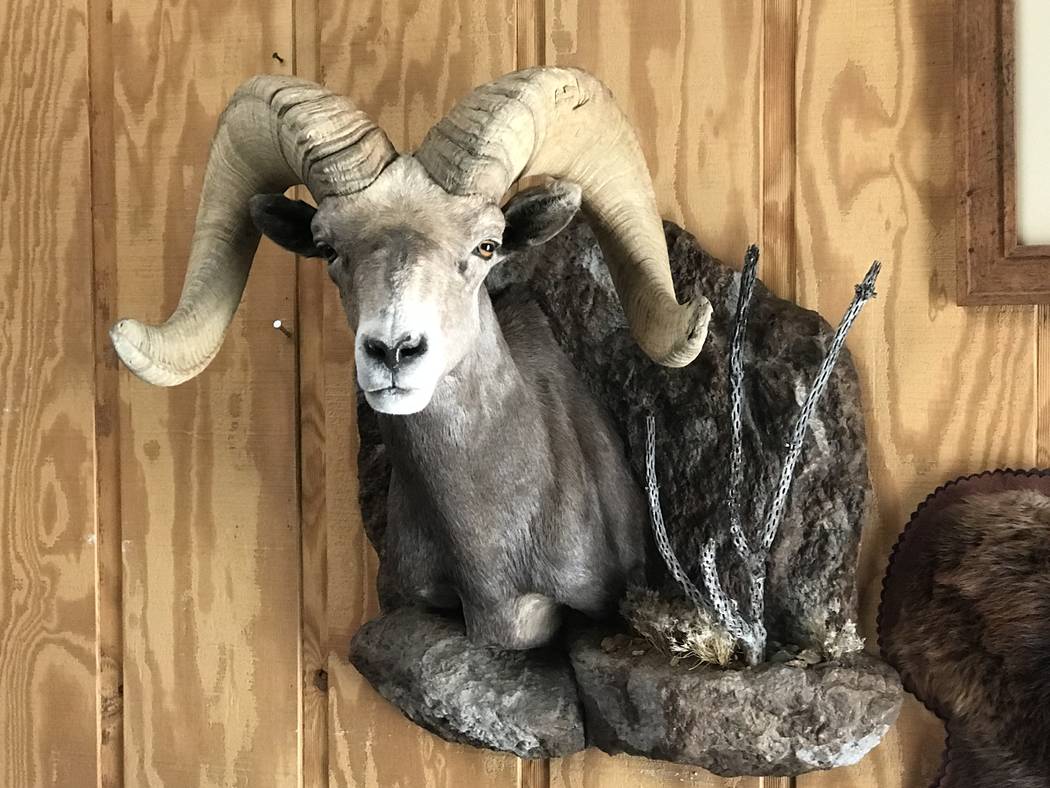Treat taxidermist as an artist

The Merriam-Webster dictionary defines taxidermy as “the art of preparing, stuffing, and mounting the skins of animals and especially vertebrates.” Another definition adds the words “with lifelike effect.”
Since taxidermy is considered an art, one who practices taxidermy is more than a taxidermist. He or she is an artist. And like artists who use canvas or marble, a taxidermist’s finished works also tell a story.
Each story is different. So too are the memories a mount – the finished taxidermy product – might evoke for the person who commissioned the work. The ability of a quality mount to evoke memories of a special hunting experience is why most hunters choose to have a taxidermist mount an animal they have legally harvested.
Hunters can tell you in fine detail the story behind each mount they have, whether it is one or many.
The day before Thanksgiving Day 2018, I harvested a beautiful desert bighorn sheep while in the company of friends and my son Hyrum. That hunt turned out to be my last with Hyrum as he passed away unexpectedly. On Friday, I picked up the finished mount of that ram from Henry’s Artistic Wildlife in Kingman, Arizona.
As one might imagine that ram now has a special place in our home, and I can’t look at him without thinking of that day and everything that went into a once-in-a-lifetime experience with my son.
As with any vocation, not all taxidermists are created equal. Be sure to do your research before trusting your memories to someone you don’t know. Sure, the internet is one place to get started, but personal references should probably carry more weight in your choice of taxidermists than something posted online.
Making that decision ahead of time will save you both time and headaches.
Henry Aguilar, the taxidermy artist who mounted my ram, said having a quality mount starts with you, the hunter, and what you do in the field. “The most important part of any hunt is how that animal is taken care of initially. You want to make sure you give it the best care that you possibly can,” he said.
Temperature is a big concern. So, you will want to get the hide to the taxidermist or a cooler as soon as possible. The warmer it is the faster you will want to get it there.
When field dressing and skinning your animal, Aguilar recommends using a sharp knife and making your cuts from the inside of the skin toward the hair and not the other way around. Cutting across the hair can cause damage to the hide that could limit your mounting options or impact the quality of your mount.
He also pointed out that good photographs are a plus because they can help the taxidermist capture your animal’s appearance and its surroundings. In the case of my ram, Aguilar was able to use photos to match the color of rocks found in the area.
When you bring an animal to a taxidermist, don’t be afraid to talk with him about your animal. Point out any characteristics that you noticed and consider important to the memories you want to preserve. On my ram, I wanted to be sure a bump on the nose and chunks missing from the ear were still there when it came home.
Though animals of the same species have noticeable similarities, Aguilar is quick to point out that each one is an individual with their own characteristics and features that he wants to capture.
“We take different measurements with calipers at different parts of the face, the length of the face. There are a lot of things that we record, as well as pictures that we take ourselves, to get the uniqueness of these (animals),” he said. “We want to give it back, what you brought to us originally. We want you to recognize your ram, everything about it, and bring back all those good memories of that hunt.”
Something else to look for in a taxidermist is a willingness to communicate with you when the time comes for the actual mounting process to begin. By talking with you at this point, the taxidermist can reacquaint himself with your wishes, and it will give you the chance to make any changes that may have come to mind while waiting for the hide to come back from the tannery.
Freelance writer Doug Nielsen is a conservation educator for the Nevada Department of Wildlife. His “In the Outdoors” column, published Thursday, is not affiliated with or endorsed by the NDOW. Any opinions he states in his column are his own. Find him on Facebook at @dougwritesoutdoors. He can be reached at intheoutdoorslv@gmail.com